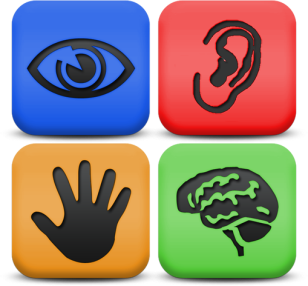 I attended a webinar today on Digital Accessibility and got a lot to think about. Accessibility is both a legal issue, in that it is required by law, and a moral issue, in that it is the right thing to do. Accessibility issues have evolved as the awareness of disabilities has become more universal. In the early days, accessibility referred mostly to physical disabilities and was handled with things like wheelchairs and elevators. Now, in education, disabilities are more likely to mean learning disabilities that need to be addressed. The good news is that more and more, students with disabilities in K12 are being recognized and are having their needs met. This allows them to move on to higher education, where the need to address accessibility is become more important than ever.
I attended a webinar today on Digital Accessibility and got a lot to think about. Accessibility is both a legal issue, in that it is required by law, and a moral issue, in that it is the right thing to do. Accessibility issues have evolved as the awareness of disabilities has become more universal. In the early days, accessibility referred mostly to physical disabilities and was handled with things like wheelchairs and elevators. Now, in education, disabilities are more likely to mean learning disabilities that need to be addressed. The good news is that more and more, students with disabilities in K12 are being recognized and are having their needs met. This allows them to move on to higher education, where the need to address accessibility is become more important than ever.
In this era of digital access, there are more tools than ever that are available to help students of all ability levels succeed. Several key tools that should be the considered for all courses include adding captions or having transcripts for videos, providing audio versions of written materials, and having alternative ways to communicate if you are using pictures, graphics, and/or charts. Website/course design should also be an important consideration – the LMS capabilities that are available should be taken advantage of.
Many accessibility issues arise because it is not taken into consideration when a course is being designed, but rather, when an instructor is made aware that a student with a disability will be taking their course. While adjusting a course to be more accommodating when notified of a student with a disability is preferable to doing nothing, taking accessibility into consideration from the outset is preferable, easier in the long run, and more beneficial to all students. As an example, I had a hearing impaired student enroll in my CSC175 course last semester. This required me to go back and ensure that all of my videos had captions. For videos that I was using that were created by someone else, the Disabilities Services office helped, but I have a lot of content that I created myself, and since I was planning to edit the videos, I also went ahead and captioned them. I found that many of my students actually preferred watching the videos with the captions to the uncaptioned videos, for whatever reason. Keeping that in mind, I will be captioning any videos that I create in the future. This adds a little bit of time in the creation of the content, but will better serve the students in the long run.
If you are wanting to redesign your course with accessibility in mind, the Universal Design for Learning model is a good one to follow (there will be a blog post on that soon). In the meantime, below is a list of design choices that can increase accessibility to your course content (this list was given in the webinar, and I am sharing it here.):
- Caption your videos
- Offer choices for assignment submissions
- Allow students to revise and resubmit work
- Reduce the cost of course materials
- Offer the course online
All of these suggestions address different accessibility needs and could be taken into consideration in your course design work. If you are looking for ways to make your material more accessible in Canvas, they actually provide a list of General Accessibility Design Guidelines and how to implement them. This is everything from ensuring that you have meaningful alt text descriptions of images for screen readers to page design and using headings. If you are interested in learning more about Accessibility and Canvas, they actually have an Accessibility Group where instructors help each other with accessibility issues that they have run into.
All in all, taking accessibility into consideration as part of your course design can benefit all students, not just student with known disabilities. Everyone learns differently, and having alternatives makes it easier to meet the student where they are.
